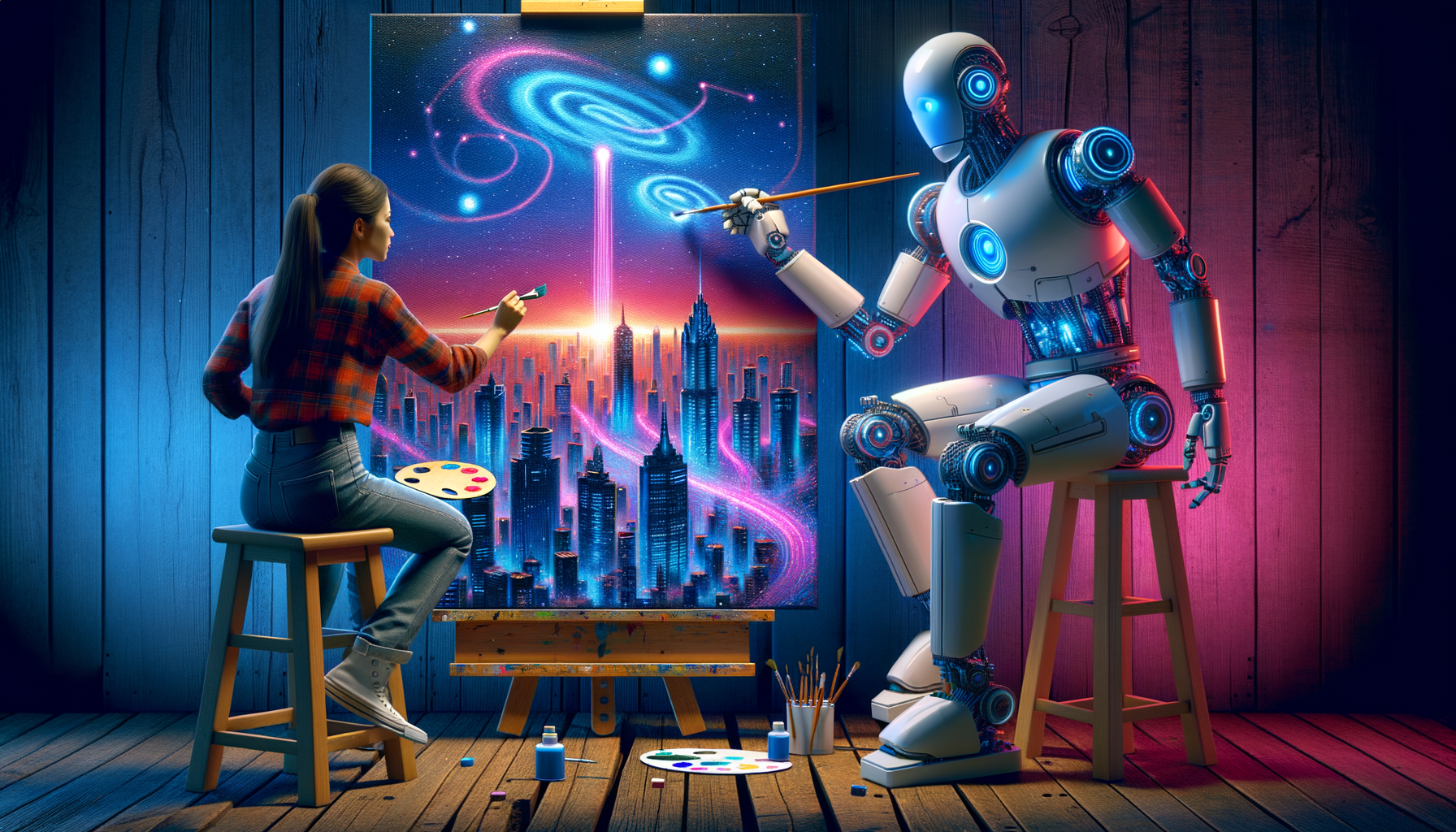
The Rise of Generative AI and the Future of Co-Creativity
In recent years, generative artificial intelligence (AI) has taken the world by storm, with platforms like ChatGPT leading the charge. The ability of these AIs to produce text, imagery, and even code that can mimic human creativity has not only captured the public’s imagination but also sparked a vigorous debate about the future of work and creative industries. As we grapple with the implications of this technology, the concept of ‘co-creativity’—where humans and AI collaborate—has emerged as a critical area of focus. This blog post delves into the dynamics of generative AI, the concerns it raises, and the potential that co-creativity holds for harmonizing human and machine intelligence.
Understanding Generative AI
Generative AI refers to the class of artificial intelligence that can generate new content after learning from a large dataset. These systems use techniques such as deep learning and neural networks to understand patterns and replicate styles, enabling them to produce original outputs. One of the most popular examples is OpenAI’s ChatGPT, which uses a variant of the GPT (Generative Pre-trained Transformer) architecture to engage in human-like text conversations and generate written content.
The Impact on Jobs and Creative Work
One of the most pressing concerns surrounding generative AI is its potential to displace jobs, especially in sectors that rely heavily on creative and intellectual outputs. The fear is that as AI becomes more adept at tasks such as writing, designing, and programming, there will be less need for human involvement. This concern is not unfounded, but it is also not the whole picture.
Embracing Co-Creativity
Experts in the field are increasingly advocating for a shift in perspective, from viewing AI as a replacement for human workers to seeing it as a collaborator that can enhance human creativity. This approach, known as co-creativity, emphasizes the synergy between human intuition, experience, and emotional intelligence with the data-processing and pattern-recognition capabilities of AI.
Co-creativity is not just a theoretical concept; it’s already being put into practice in various industries. For instance, AI tools are being used by writers to overcome writer’s block, by artists to explore new styles, and by musicians to compose complex pieces. These collaborations can lead to outcomes that neither humans nor AI could achieve independently.
The Need for Extensive Research
To fully harness the potential of co-creativity, extensive research is required. We need to understand how human-AI interaction can be optimized, the ethical considerations of such collaborations, and how to design AI systems that can effectively complement human skills. Moreover, we need to study the impact of these technologies on employment and develop strategies to ensure that the workforce can adapt to these changes.
Books such as “Human Compatible: Artificial Intelligence and the Problem of Control” by Stuart Russell (link) and “AI Superpowers: China, Silicon Valley, and the New World Order” by Kai-Fu Lee (link) offer in-depth insights into these challenges and the future of AI.
Conclusion
As generative AI continues to evolve, it is clear that the relationship between humans and machines is entering a new phase. The concept of co-creativity offers a promising path forward, one where AI can augment human abilities and creativity rather than replace them. By focusing on research and fostering a collaborative mindset, we can work towards a future where AI serves to empower human potential.
The journey toward understanding and developing co-creativity is an ongoing one. As we continue to explore this space, it is essential to remain open to the possibilities that human-AI collaboration can bring. The future of AI development hinges on our ability to navigate these uncharted waters with care, thoughtfulness, and a commitment to enhancing the human experience.
For those interested in exploring generative AI tools and resources, products like the GPT-3 API by OpenAI (link) offer a glimpse into the capabilities of current AI technology and the potential for co-creative endeavors.